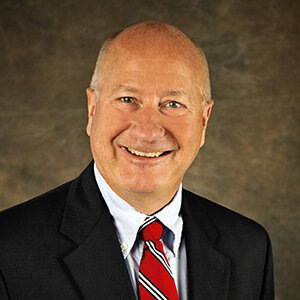Understanding the Owner-Only 401(k) Plan
By Jeff Aga, QKA, CISP, CHSP
What is an owner-only 401(k) plan?
An owner-only 401(k) plan is a 401(k) plan that covers a business owner (and his spouse) without employees or a small business that can exclude certain employees from coverage. An owner-only 401(k) plan is designed to not only maximize allowable contributions, but to be less complex and less costly to maintain than a conventional 401(k) plan. Other names used for owner-only 401(k) plans are “Solo(k),” “Indy(k),” “I(k),” or “Uni(k).” Ascensus coined the term, “Individual(k)™ for owner-only 401(k) plans it offers.
How much can be contributed to an owner-only 401(k) plan?
The maximum amount that can be contributed to an owner-only 401(k), or Individual(k), plan depends on the type of contribution. The following types of contributions can be made to an Individual(k) plan.
Employee elective deferrals of as much as 100 percent of an employee’s eligible compensation up to a certain dollar amount ($19,500 for the 2021 tax year)
Employees who are age 50 or older can defer an additional catch-up contribution amount ($6,500 for 2021). Elective deferrals may either be pretax or after-tax Roth contributions, or a combination of both.Discretionary employer profit sharing contributions of up to 25 percent of eligible compensation
Nondeductible employee or after-tax contributions in addition to pretax or Roth deferrals, plan permitting
The owner may make all types of contributions to the plan. Her aggregate contribution limit for all types of contributions is 100 percent of her eligible compensation up to a set dollar amount ($58,000 for 2021), plus a catch-up contribution if age 50 or older ($6,500 for 2021). Annual dollar amounts are subject to cost-of-living adjustments.
Note that many typical 401(k) plans offer employer matching contributions, but there’s no advantage of doing that in an owner-only 401(k) plan because the maximum employer contribution can be made entirely through profit sharing.
Because owner-only 401(k) plans are primarily for owner-only businesses, what types of common law employees can employers exclude from plan participation?
Under federal law, the following employees can be excluded from participating in an Individual(k) plan.
Employees under age 21
Employees with less than one year of service
Employees who work less that 1,000 hours per year
Certain union employees
Certain nonresident alien employees
What makes an owner-only 401(k) plan appealing?
Several features make the Individual(k) plan appealing to business owners.
Besides potentially higher contribution limits than some plans commonly established by owner-only businesses, like simplified employee pension (SEP) and SIMPLE plans, these plans permit a great deal of funding flexibility, which allows business owners to contribute as little or as much as they desire—or are able—within the prescribed limits.
Because it’s a 401(k) plan, it can allow for in-service distributions of profit sharing contributions and nondeductible employee contributions. Deferrals are not allowed to be distributed before age 59½ except in the case of hardship, death, disability, or plan termination.
Business owners can access part of their retirement savings by ensuring that their plans allow for loans. This key advantage is not permitted in some other types of plans, like SEP plans and SIMPLE IRA plans, neither of which can offer loans.
Retirement plan assets can be moved from one type of retirement plan to another type of retirement plan or IRA (within the access limitations described above), providing the opportunity to consolidate all of an individual’s retirement savings into one plan. Consolidating assets can help keep fees down and simplify managing the investment of retirement plan assets.
Although these are 401(k) plans, they’re not subject to most of the costly nondiscrimination testing that generally applies to 401(k) plans. Because these plans only cover the owner (and possibly a spouse), any required annual reporting is typically done on IRS Form 5500- EZ, Annual Return of A One-Participant (Owners/Partners and Their Spouses) Retirement Plan or A Foreign Plan. This form is much shorter and simpler than the standard Form 5500 and accompanying schedules that must be filed for conventional 401(k) plans. It is also not required to be filed until plan assets exceed $250,000.
Formerly, owner-only 401(k) plans filed Form 5500-SF instead of Form 5500-EZ if the business owner filed electronically. Now, plans that file electronically must file the 5500-EZ through the Department of Labor’s EFAST2 web portal or file the paper version of Form 5500-EZ with the IRS.
Individual(k)™ is a trademark of Ascensus, LLC.

